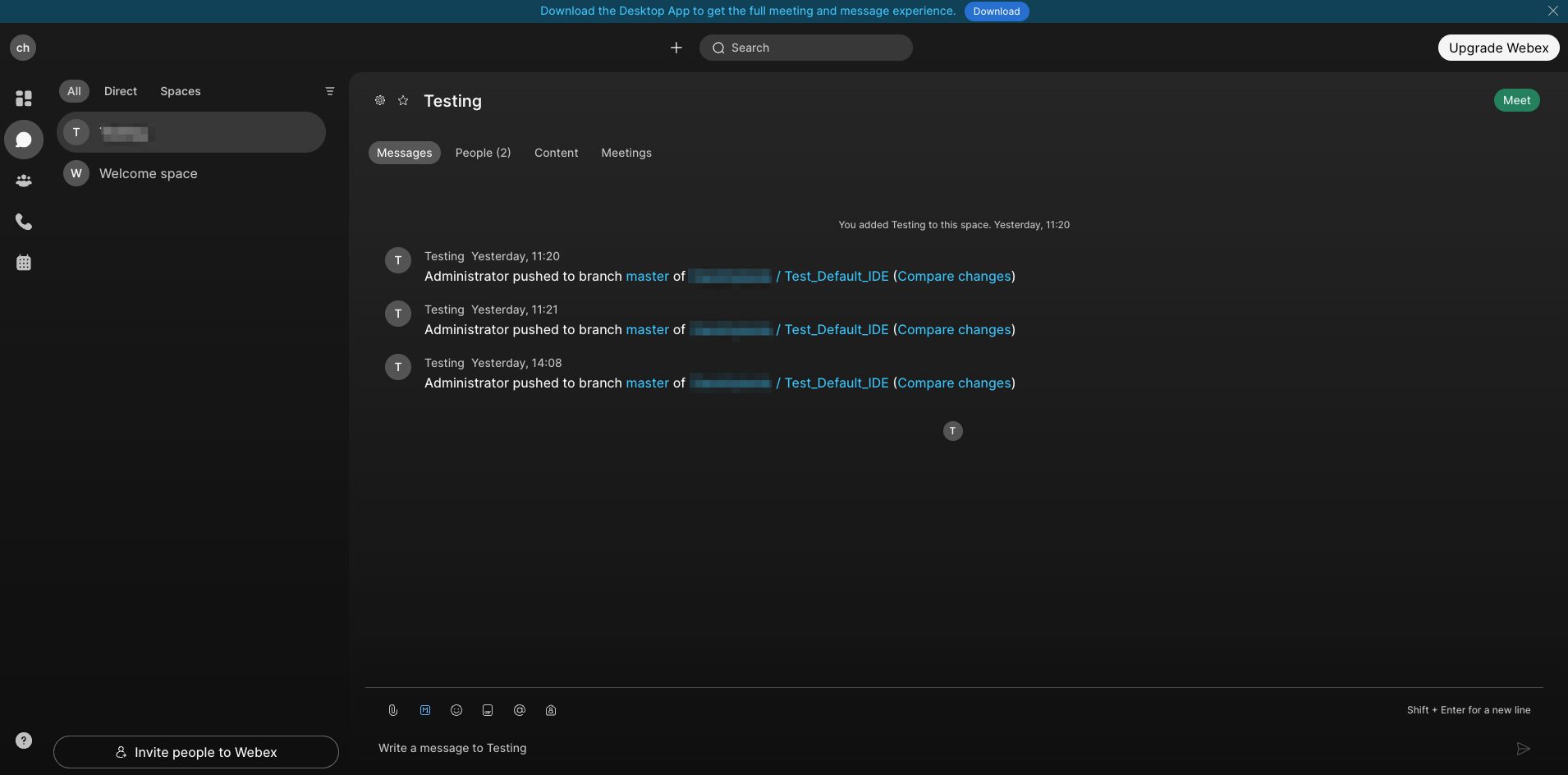Third-Party Tools Integrations
The DataOps.live integrations view allows you to link your project with third-party tools.
Within the Settings submenu, we have enabled the Integrations view for all projects.
From this integrations view, you can:
- See all available and active integrations.
- Add new integrations to link the DataOps project with these third-party tools.
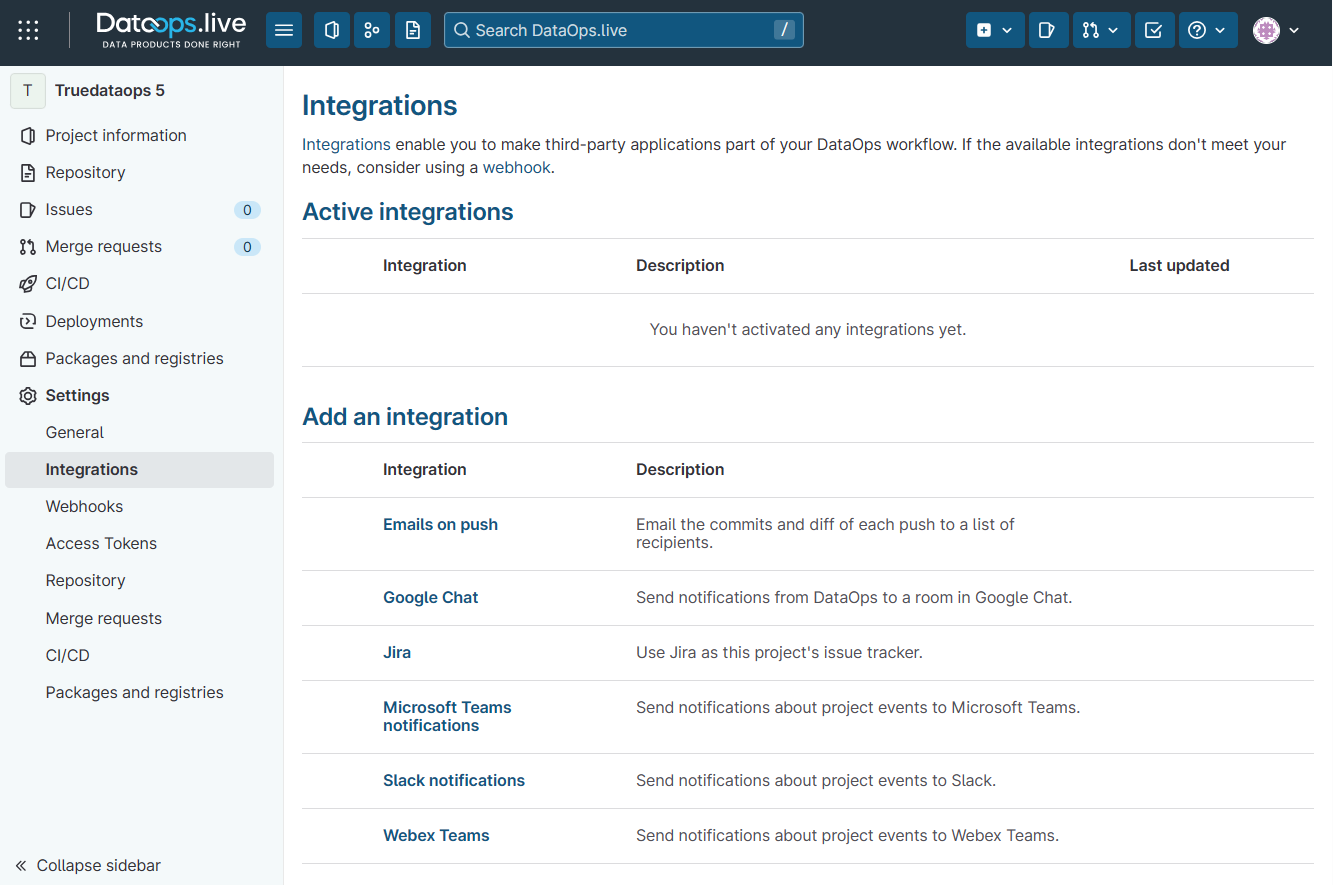
Jira integration
The Jira issue tracking integration allows you to connect your DataOps project with your Jira boards to enable better tracking of issues.

Connection and authentication
Before enabling the integration, you need to configure your Jira connection by pointing the integration to the base URL or your Jira instance.
The authentication method in Jira depends on whether Jira is hosted on the Atlassian cloud or your server:
- When connecting via Jira server, your Jira username and password are required.
- When connecting via Jira on Atlassian cloud, the email linked to your Jira account and API token are required. See Create a Jira Cloud API token for more information.
Triggers

When configuring your integration, you must define what trigger events you want to use and what detail they will show in your Jira issue.
You can also transition a Jira issue to Done by mentioning your Jira issue in a merge request or commit with the following keywords:
- Resolves ISSUE-1
- Closes ISSUE-1
- Fixes ISSUE-1
When a Jira issue is mentioned in a commit message or a merge request (depending on how the triggers were configured), a remote link and comment will be created in your Jira issue, as below.
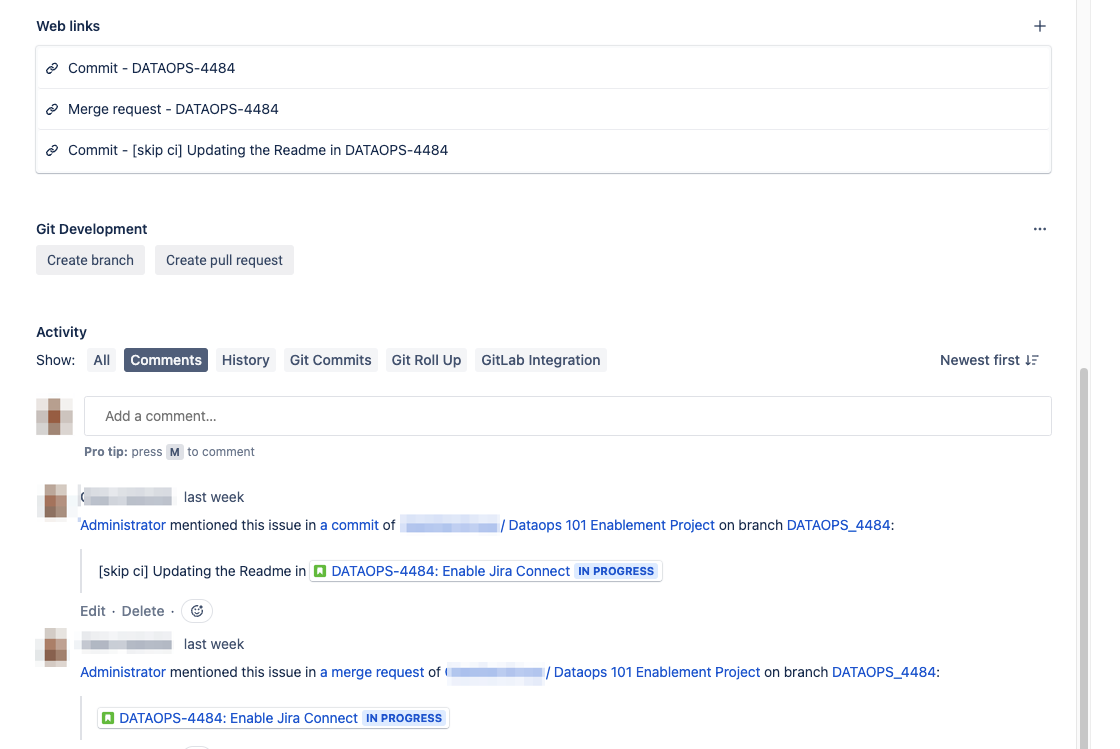
Google Hangouts integration
The Google Hangouts integration enables your DataOps project to send notifications to your Google Hangouts Chat about any changes to your project.
:::note The Google Hangouts integration only works with Google Workspace, not private Google Accounts. :::
Google Hangouts webhook
The Google Hangouts integration requires a webhook to be set up in your Google workspace to allow your chosen Hangouts space to talk to DataOps.live. To set up a webhook:
-
Enter the space where you want to receive the DataOps notifications, and from the drop-down menu, click Apps and integrations.
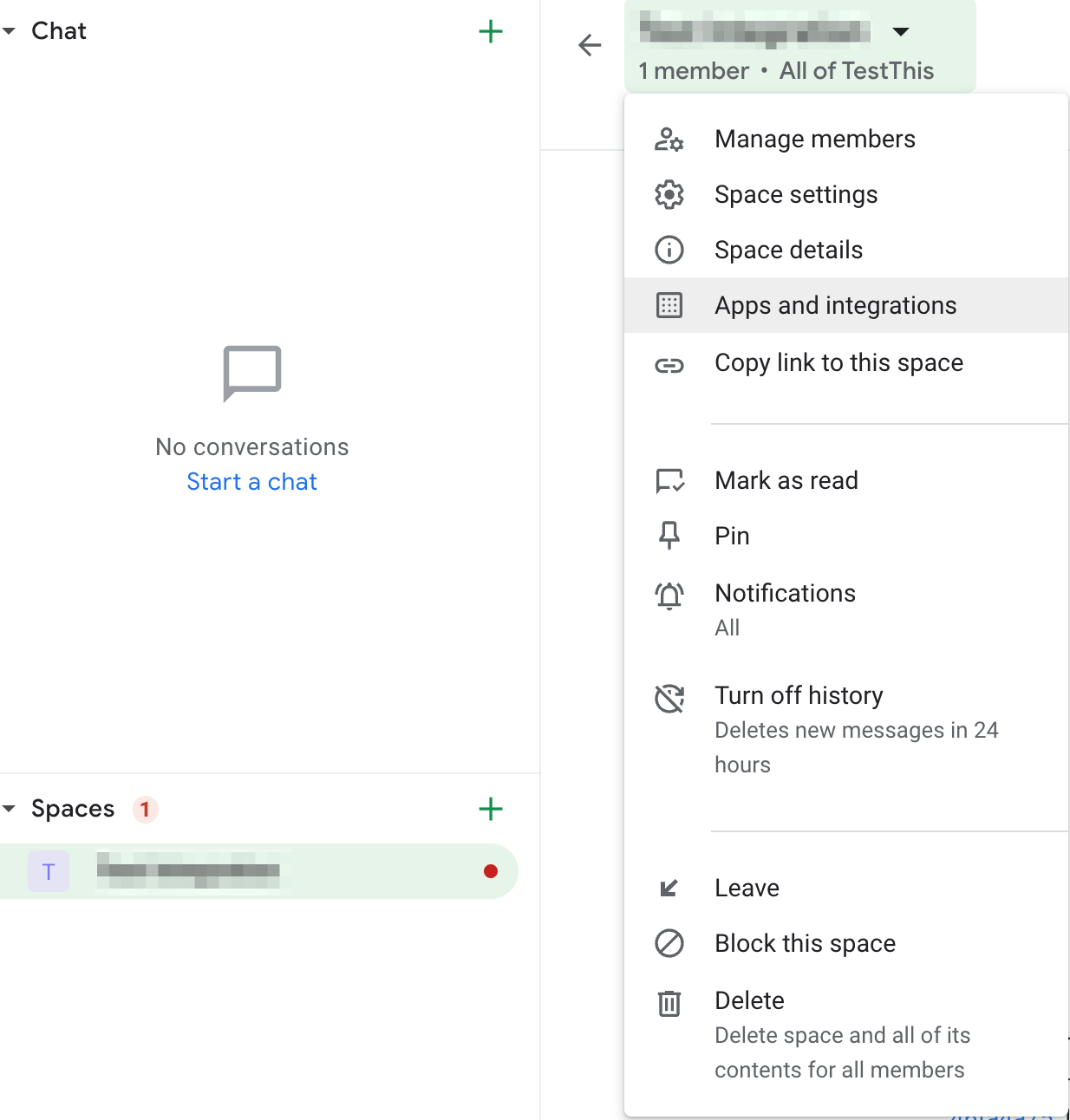
-
Select Manage Webhooks from the pop-up, then click Add Webhook.
-
On the Add Webhooks pop-up, set a name for your connector, e.g., DataOpsIntegration, and click Save.
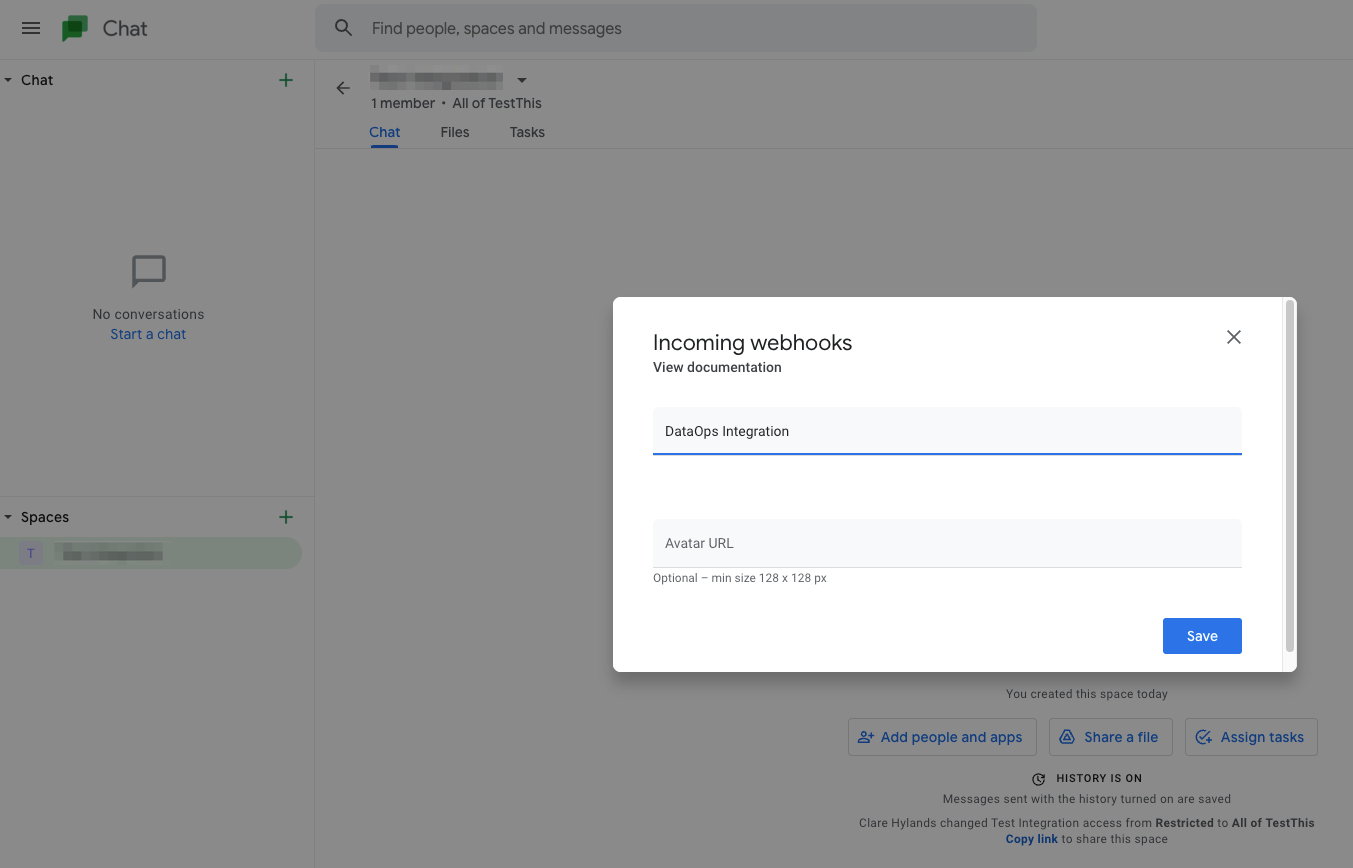
After you have created your connector, you need to copy the webhook URL so you can add this to the setup of the integration on DataOps.live.
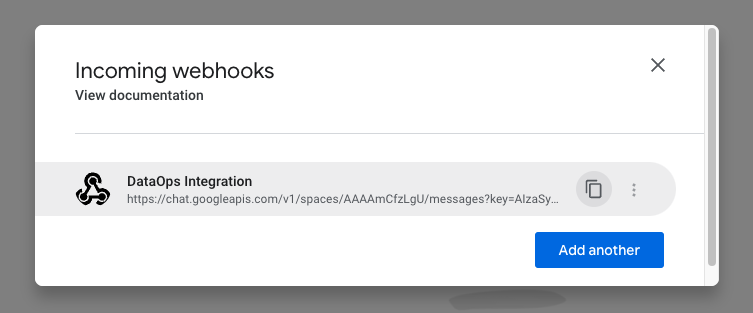
Setup and triggers
After creating the webhook in Google Hangouts, you must set up the integration within DataOps.live.
You must add the webhook URL to the Integration settings and select trigger events based on your requirements.
There are multiple trigger events for the teams' integration, including:
- Pushes to the repository
- Issues
- Merge requests
- Pipeline status changing etc.
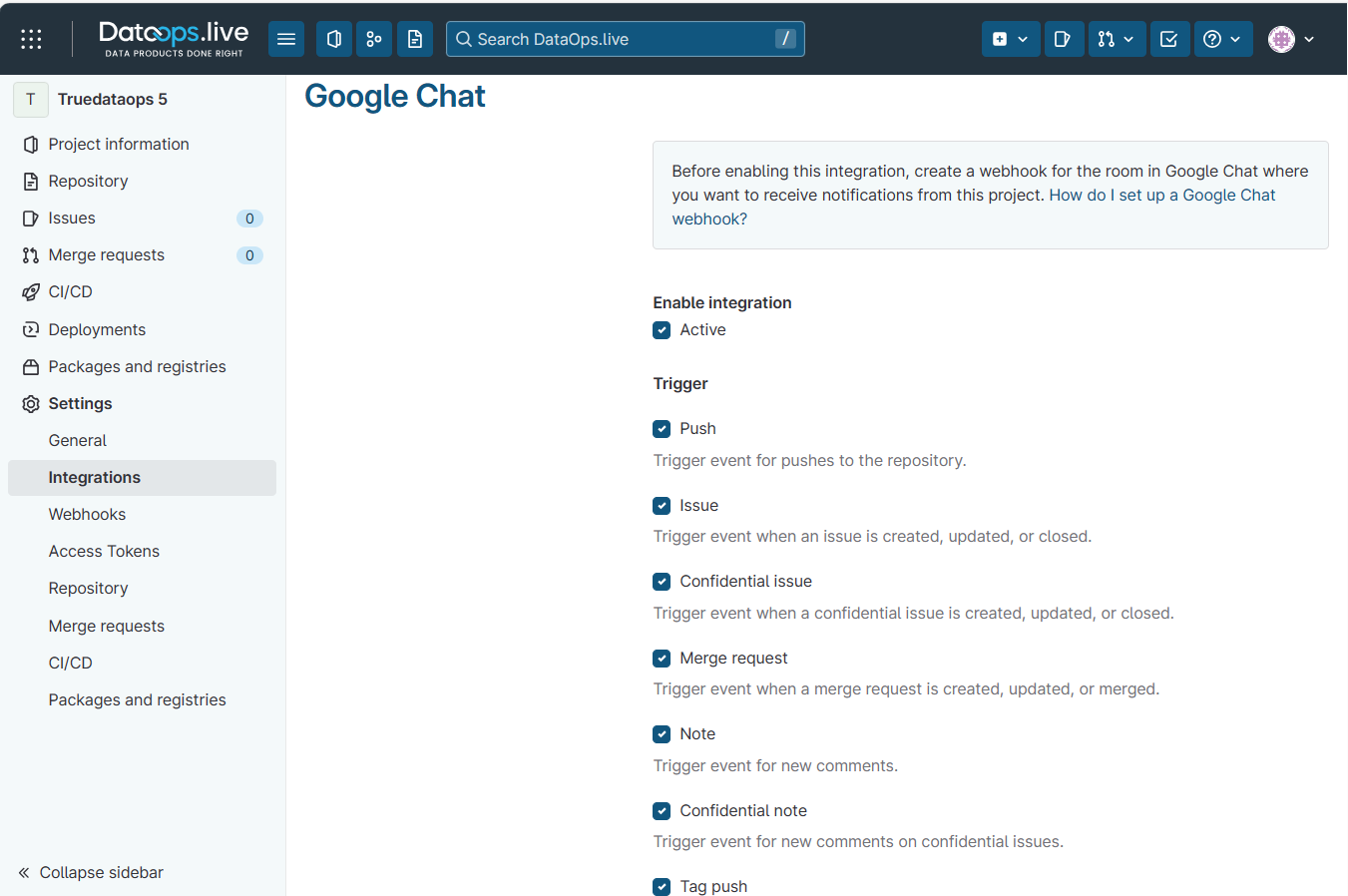
Google Hangouts notification
The integration notifications appear in the Google Hangouts Spaces, where you set up your webhook, and will contain links to individual commits, merge requests, pipelines, etc.
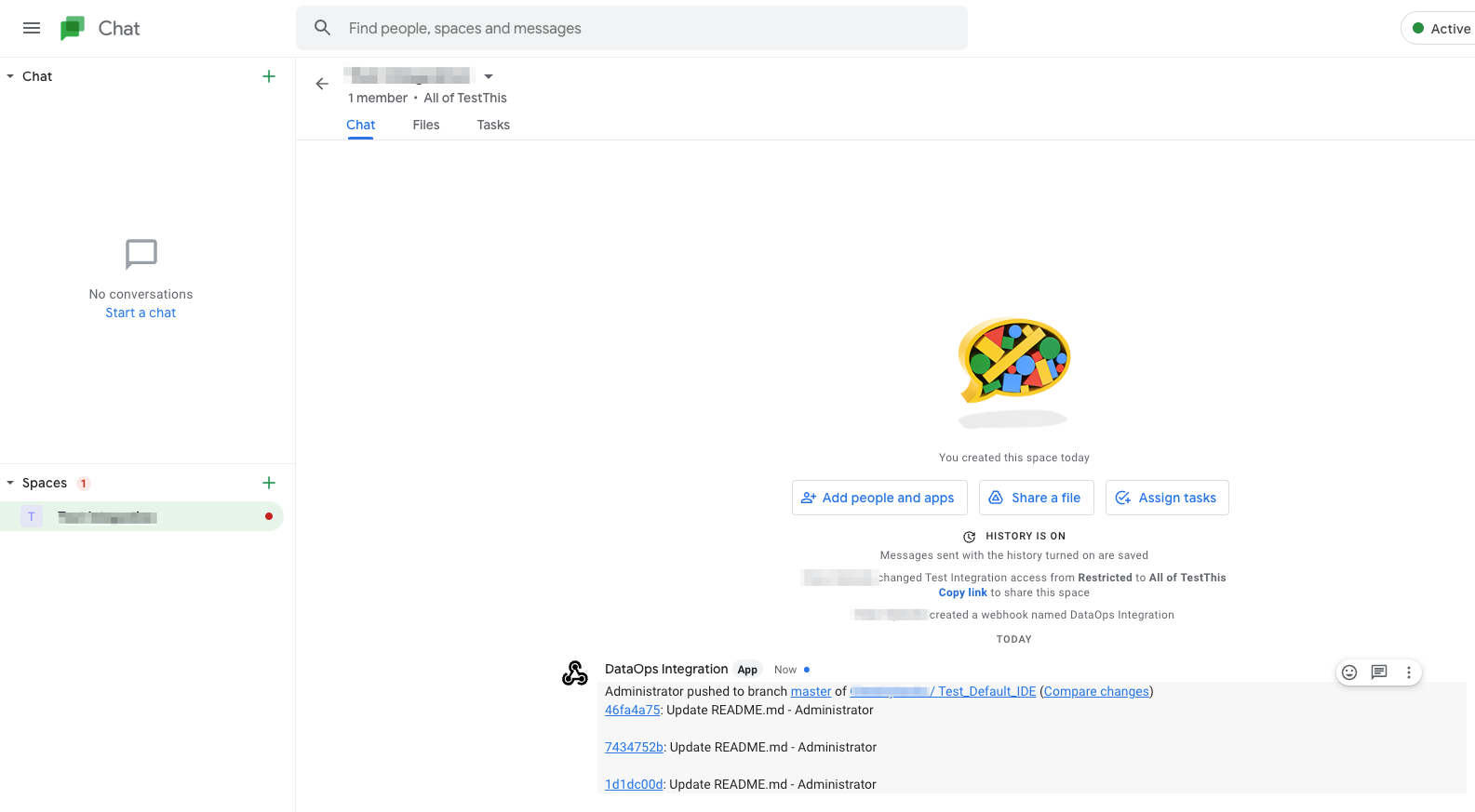
Emails on push integration
The Emails on Push integration sends an email to a list of recipients, for every change you push to your project.
Setup and triggers
When you enable the Emails on Push integration, you can select which triggers will send an email to the list of recipients you define and for which branches these emails will be sent.
You can also disable code diffs, which will exclude potentially sensitive code diffs from being present in the email notification body.
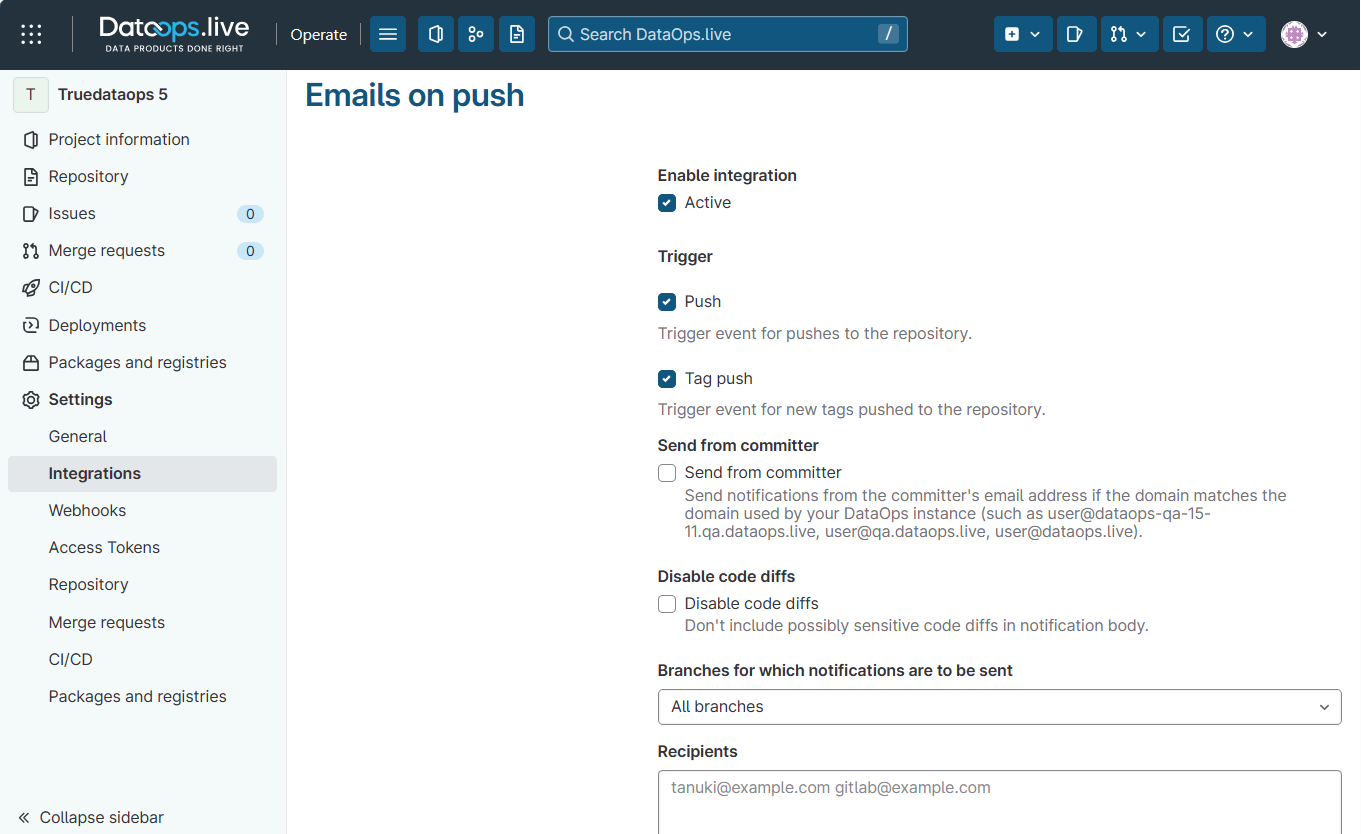
Email notification
The notification email you receive contains information about the push made to the project, as well as links back to the commit and the project.
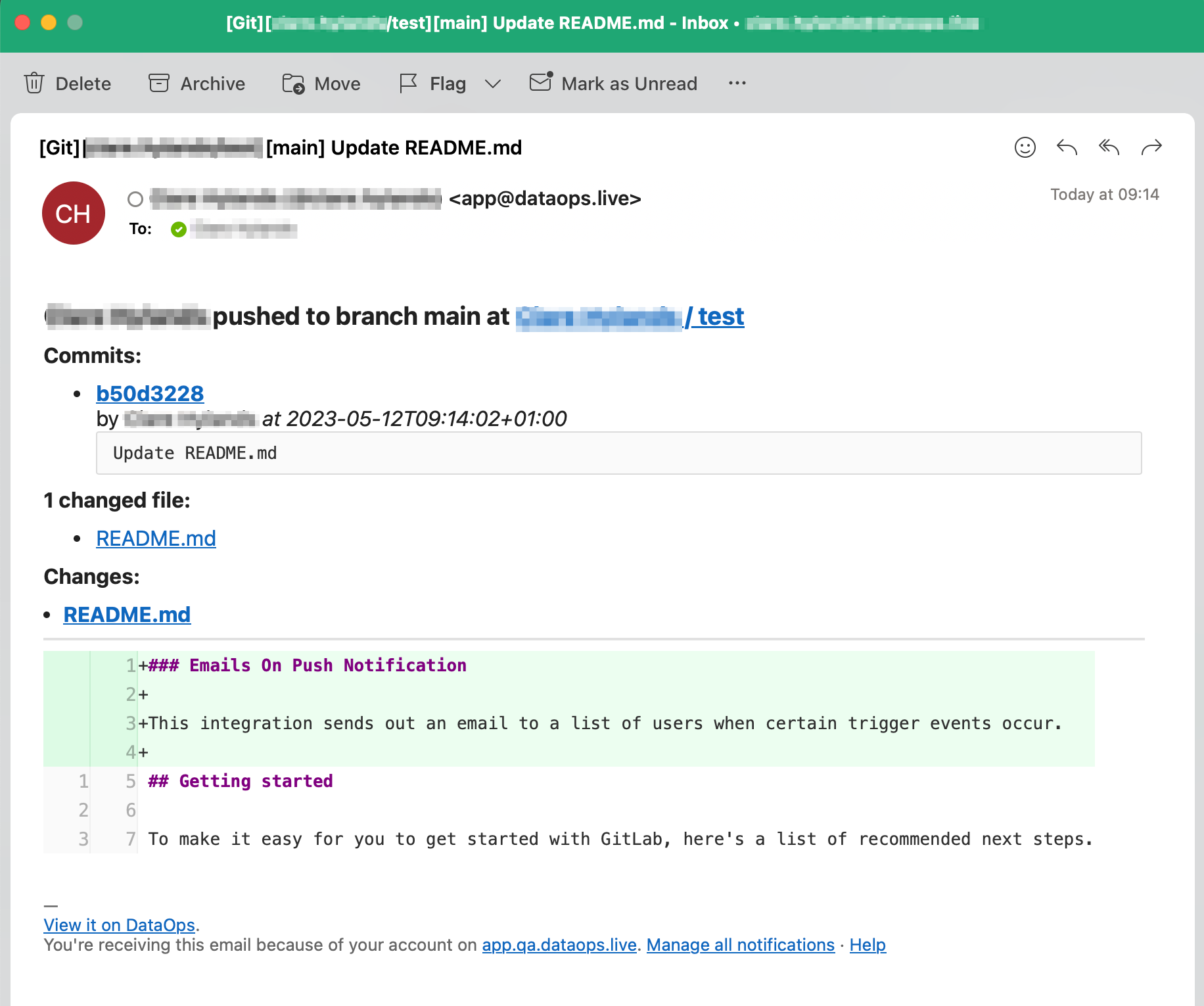
Pipeline status email integration
The Pipeline status email integration sends an email to a list of recipients when a pipeline status changes.
Setup and triggers
When you enable the Pipeline status email integration, you can select whether to only send an email for broken pipelines to the recipients you define, and for which branches these emails will be sent.
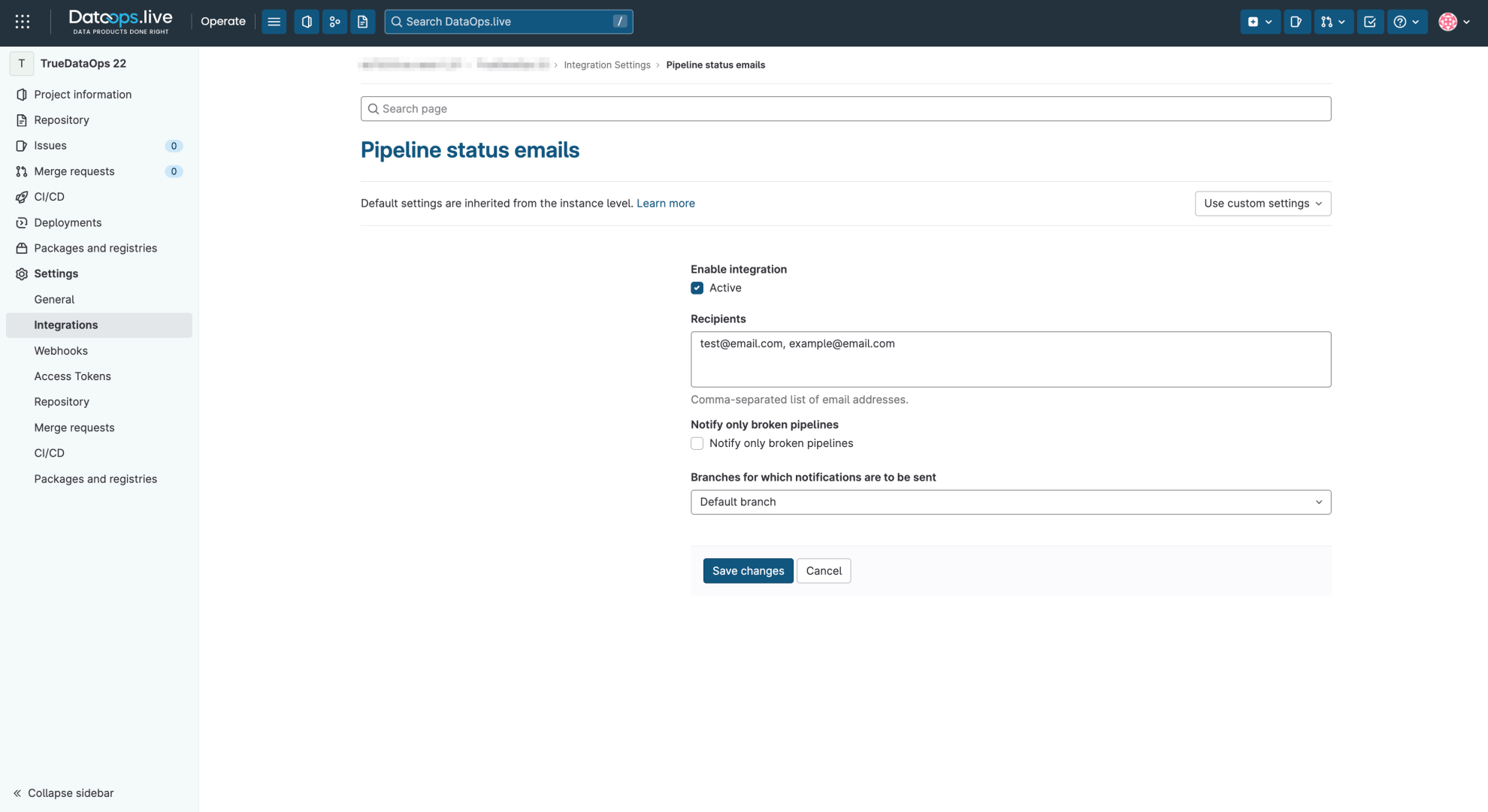
Email notification
The notification email you receive contains information about the pipeline status, as well as links back to the commit and the pipeline.
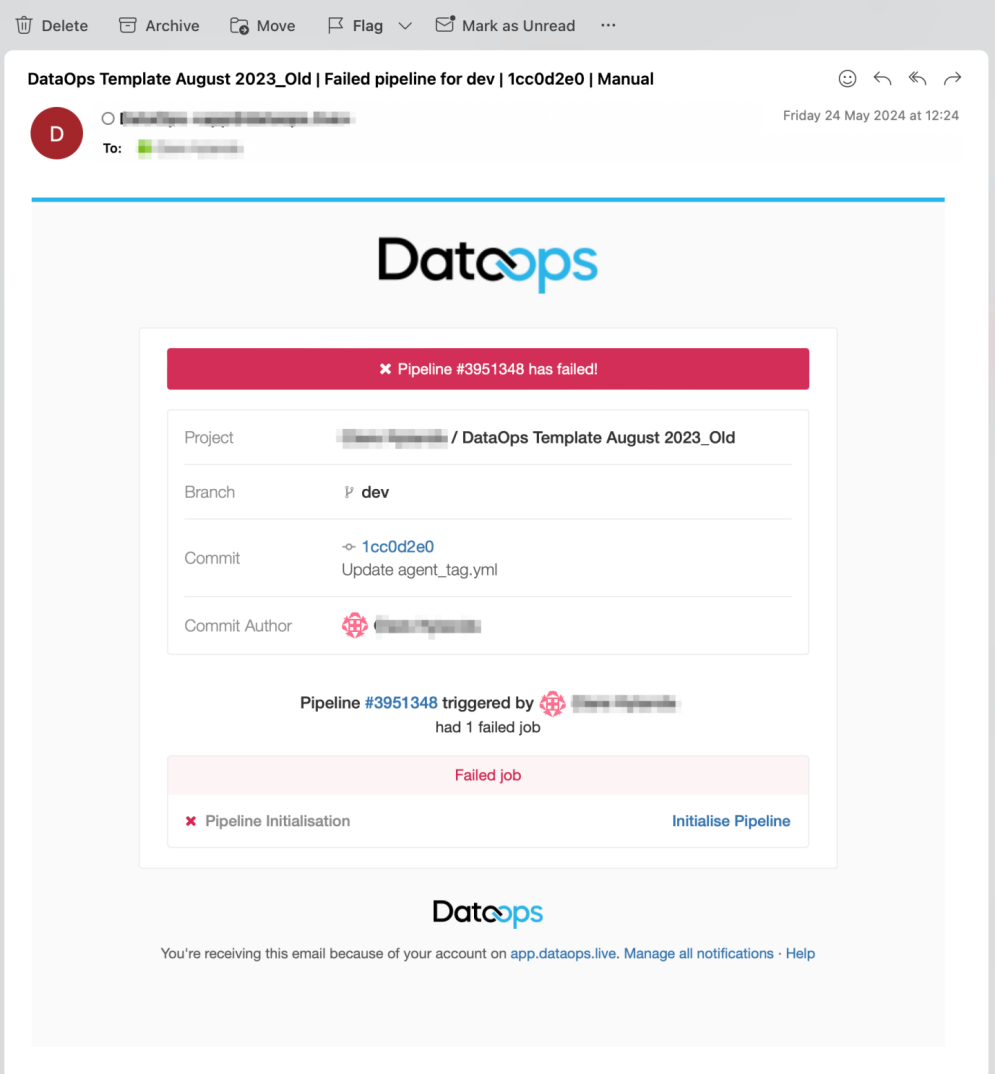
Slack integration
The Slack integration enables your DataOps project to send notifications to your Slack team about any changes to your project.
Slack webhook
The Slack integration requires a Webhook to be set up in the Slack browser to allow your Slack team to talk to DataOps.live.
To set up a webhook, you need to sign into your Slack team, start a new Incoming WebHook configuration, and identify the Slack channel where notifications should be sent.
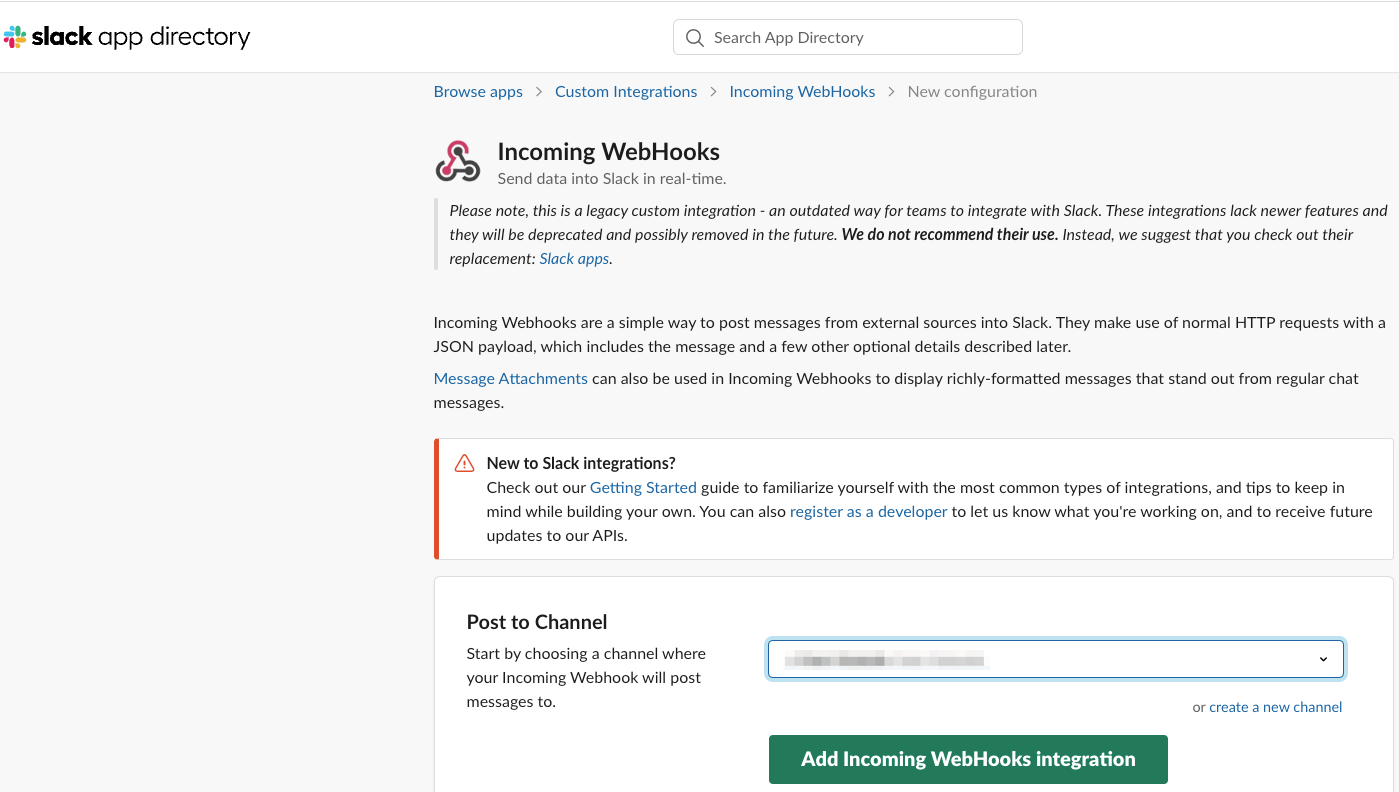
Once you create your webhook, you need to copy the Webhook URL so you can add this into the setup of the integration on DataOps.live. You can also customize the username that the integration will post as.
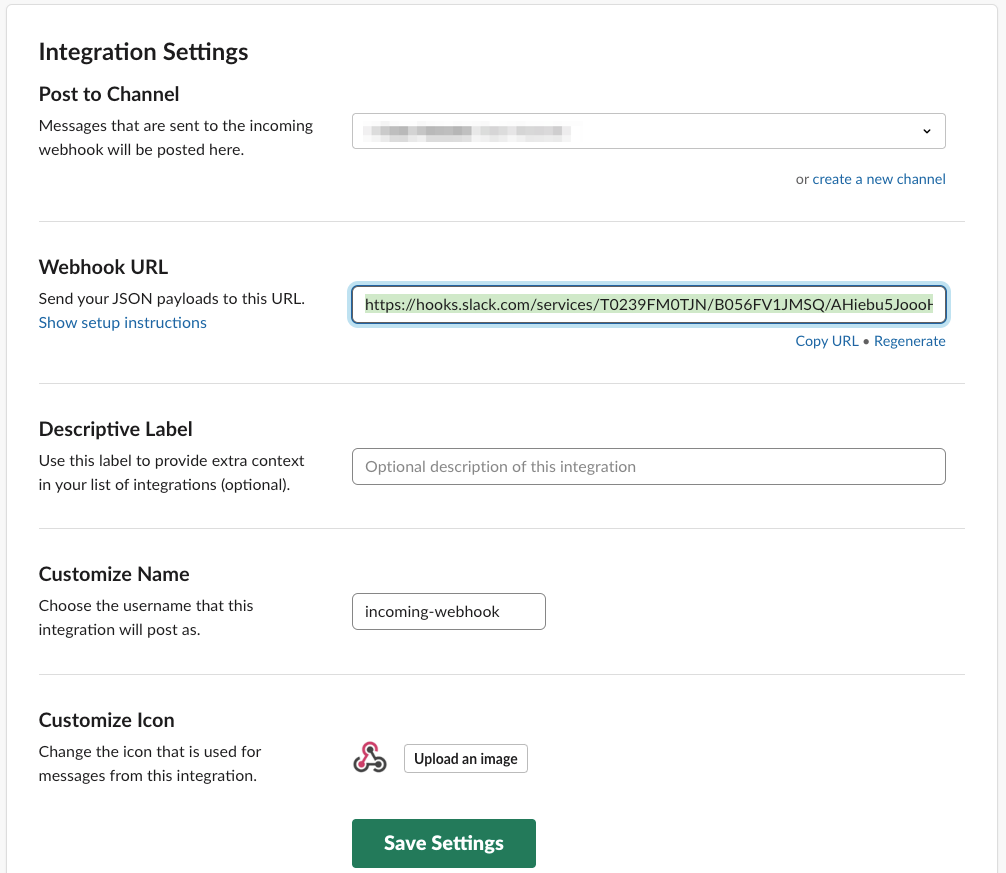
Setup and triggers
After creating the webhook on the Slack browser, you must set up the integration within DataOps.live.
Add the webhook URL into the Integration settings, select the trigger events based on your requirements, and set up a username. This username is what appears on the notification.
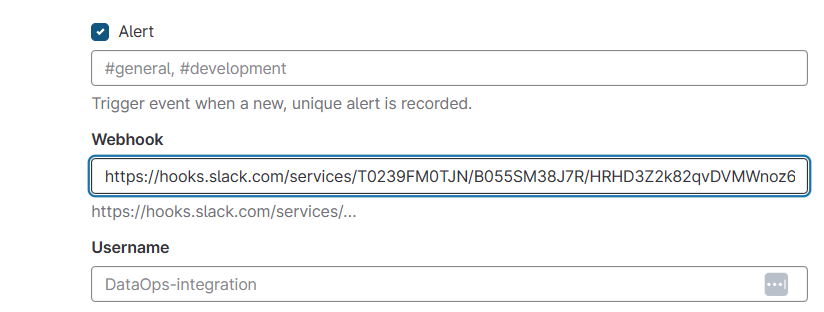
There are multiple trigger events for the slack integration, including:
- Pushes to the repository
- Issues
- Merge requests
- Pipeline status changing etc.
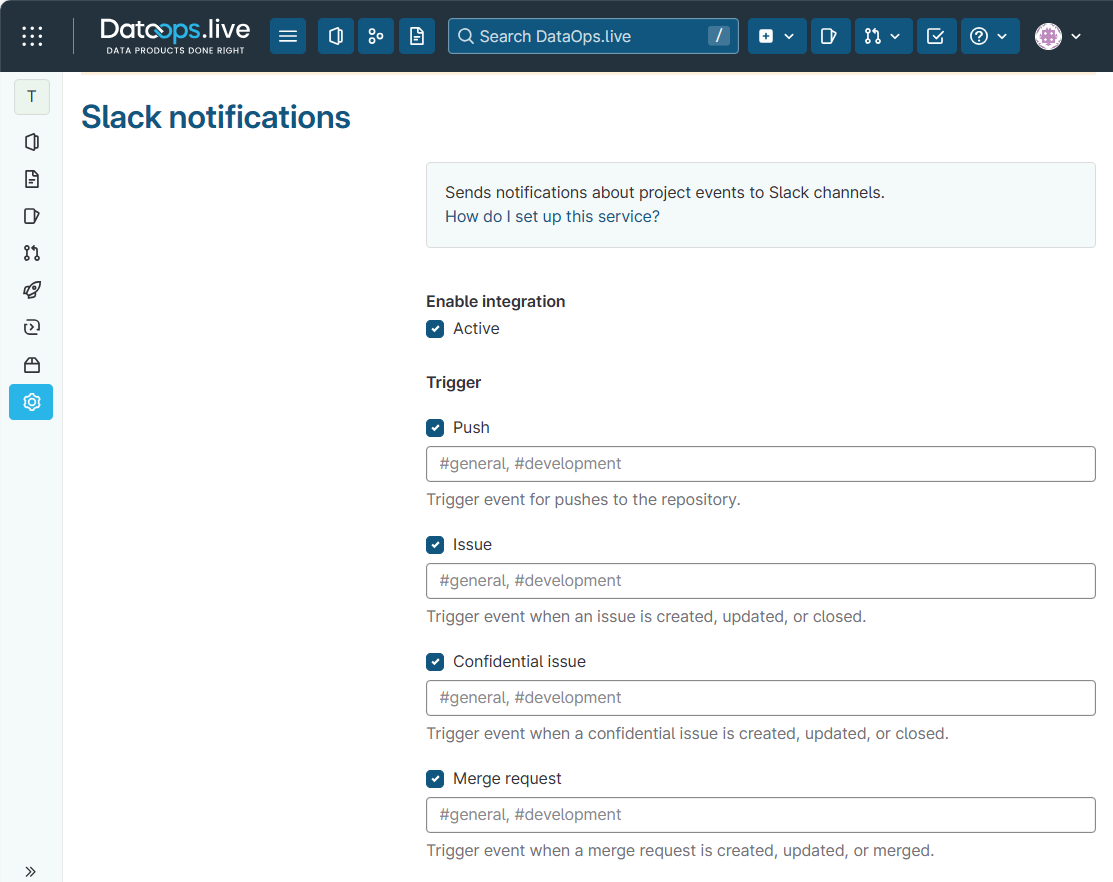
Slack notification
The integration notifications appear in the Slack team where you set up your webhook and will contain links to individual commits, merge requests, pipelines, etc.

Microsoft Teams integration
The Microsoft Teams integration enables your DataOps project to send notifications to your Teams Channel about any changes to your project.
WARNING: New Microsoft Teams integrations using Microsoft Connectors can no longer be created and existing integrations must be transitioned to workflow apps by December 2025. Microsoft announced the retirement of Microsoft Teams integrations using Microsoft Connectors.
Microsoft Teams Workflows
The Microsoft Teams integration requires a Workflow set up in your Teams app to allow your chosen Teams Channel to talk to DataOps.live. To set up a Workflow:
-
In Workflows select New Flow

-
Find and select the workflow template "Send webhook alerts to a channel".
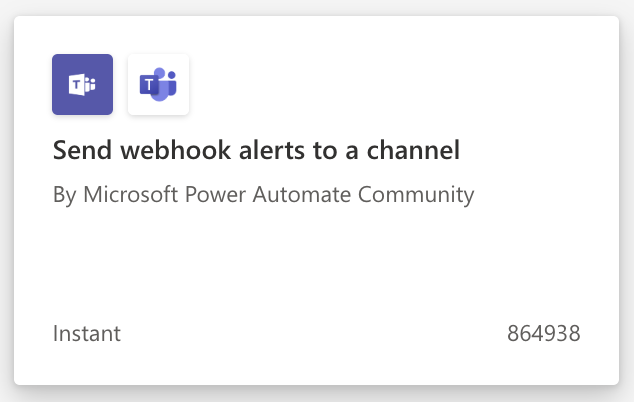
-
Give your flow a name
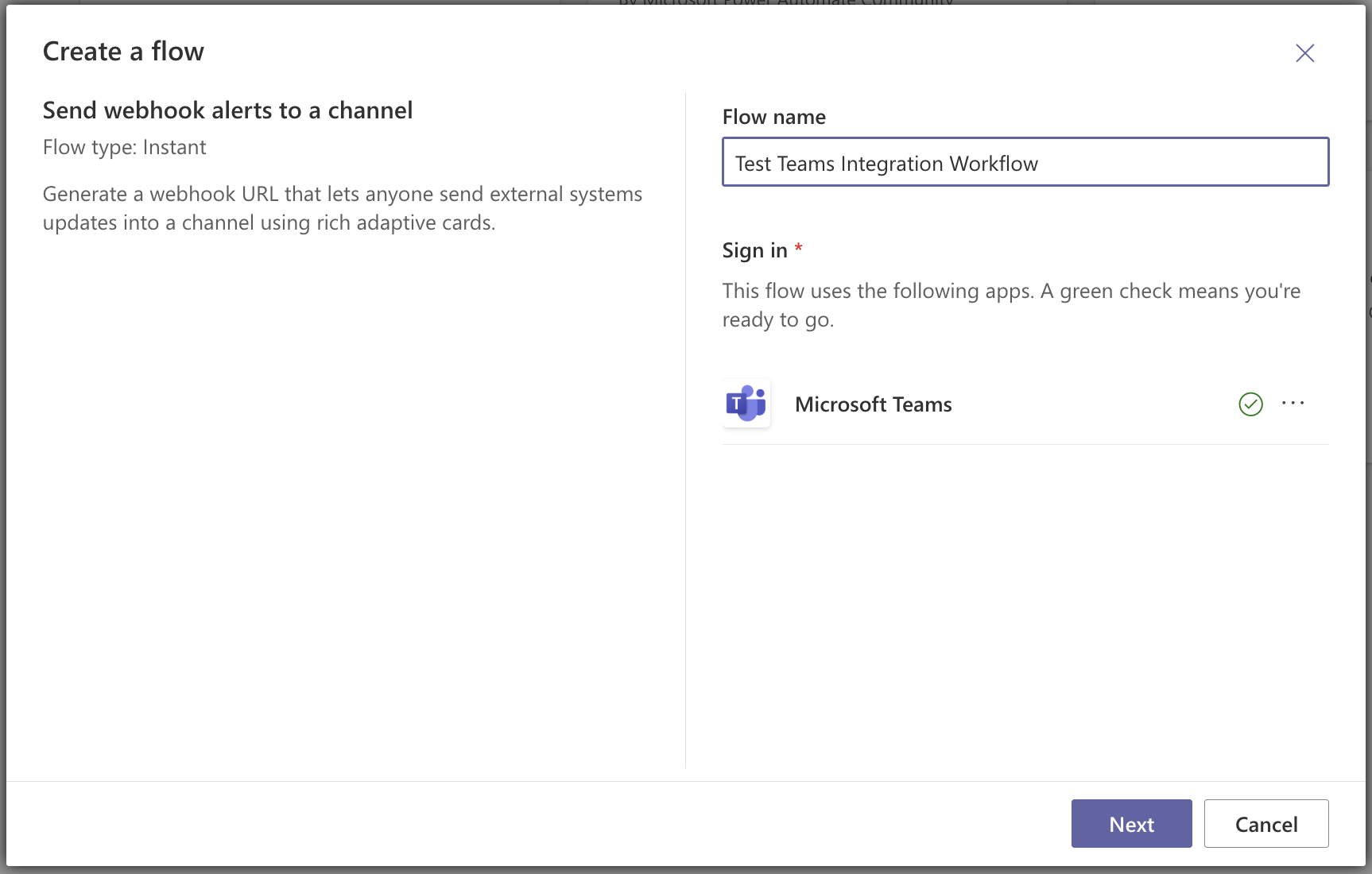
-
On the Set up your flow pop-up choose which team and channel to add the WebHook to and click Create Flow.

-
After creating the Incoming Webhook you need to copy the webhook URL to add this into the integration setup on DataOps.live.
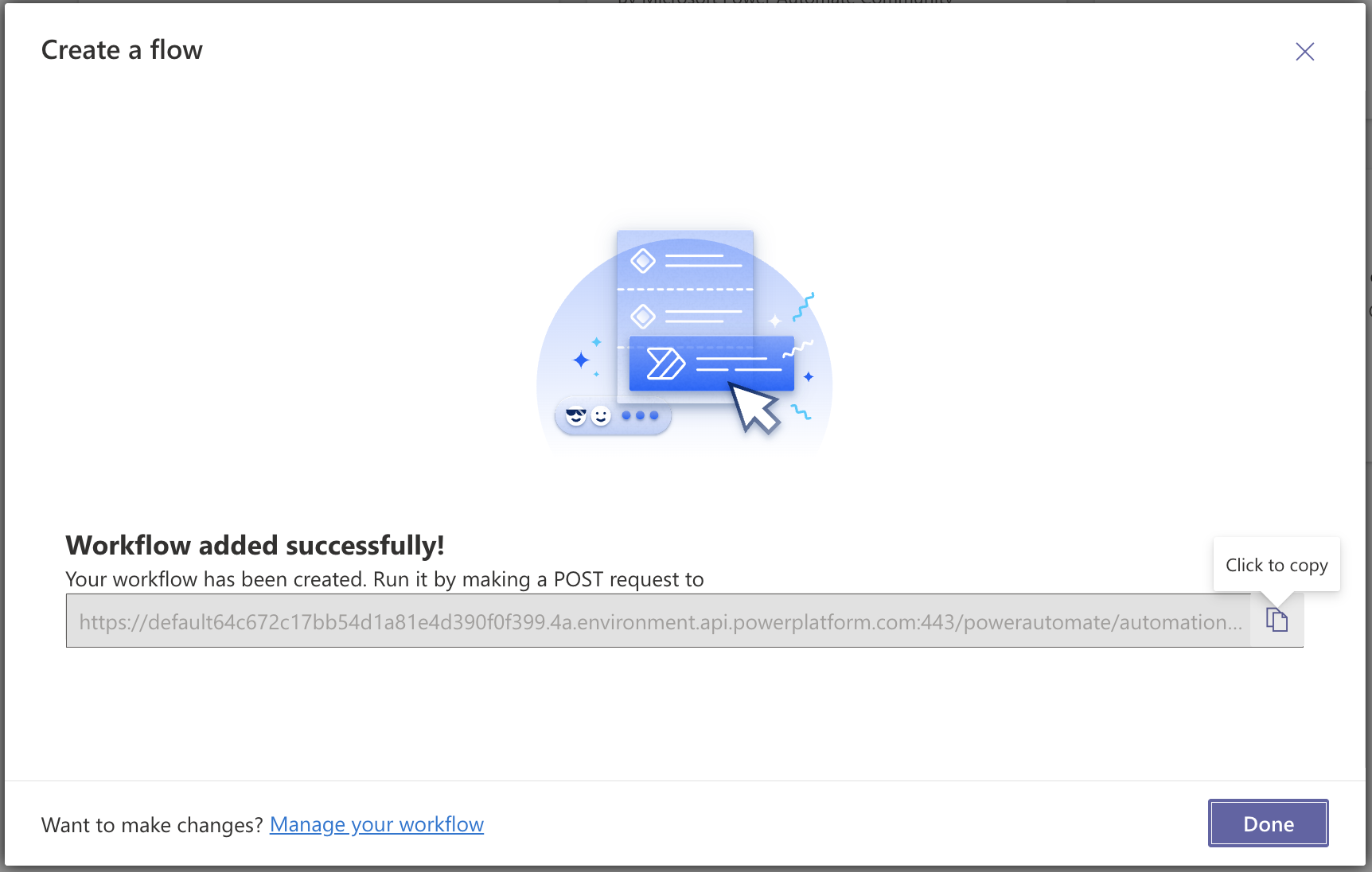
Setup and triggers
After creating the Workflow in Teams, you must set up the integration within DataOps.live.
Add the Workflow URL into the Integration settings and select the trigger events based on your requirements.
There are multiple trigger events for the teams integration, including:
- Pushes to the repository
- Issues
- Merge requests
- Pipeline status changing etc.

Teams notification
The integration notifications appear in the Microsoft Teams channel where you set up your webhook and will contain links to individual commits, merge requests, pipelines, etc.
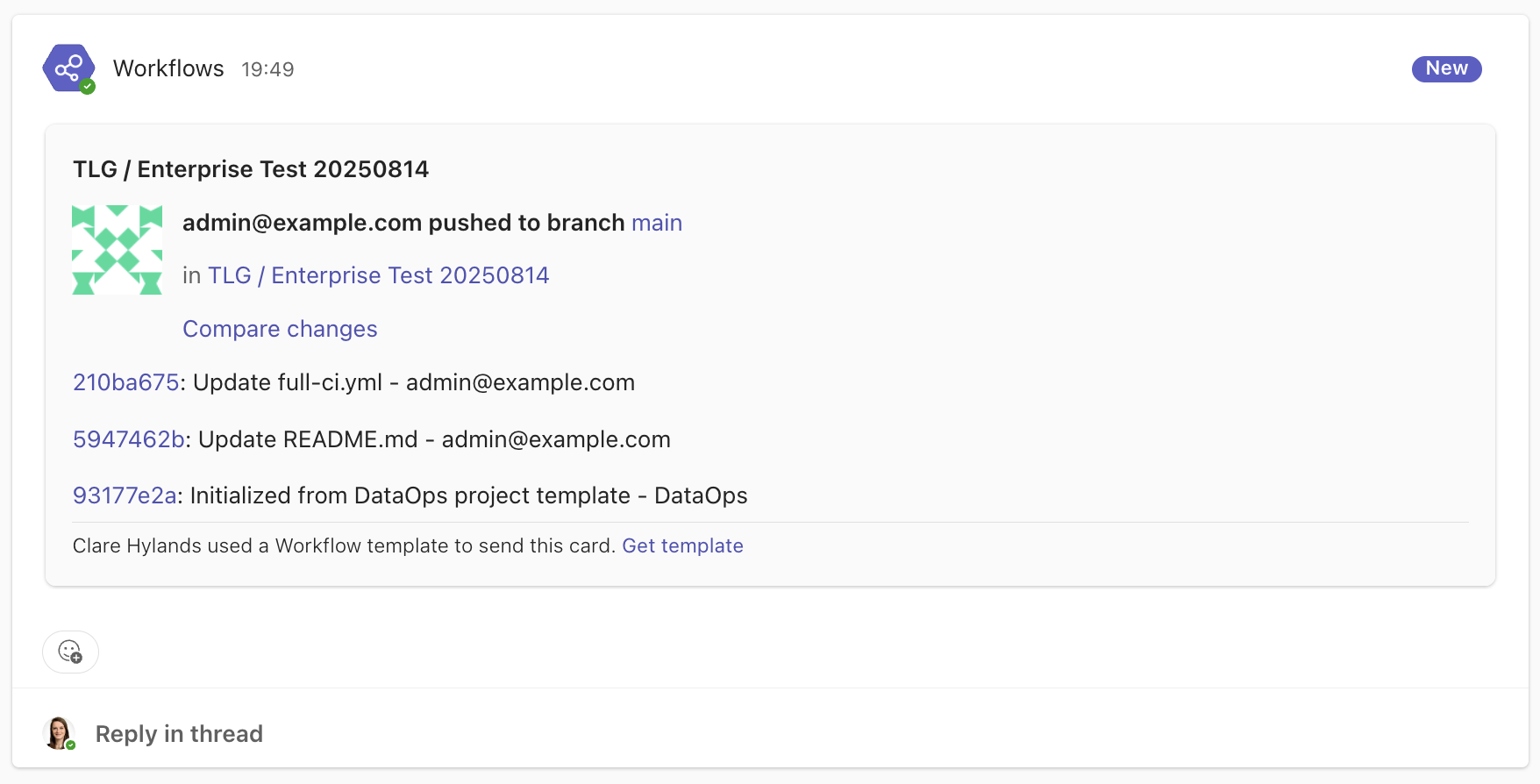
Cisco Webex integration
The Cisco Webex integration enables your DataOps project to send notifications to your Webex space about any changes to your project.
Cisco Webex webhook
The Webex integration requires a webhook to be set up in the Webex browser to allow your Webex space to talk to DataOps.live. To set up a webhook:
-
Sign into your Webex team, start a new Incoming WebHook configuration, and click Connect.
-
Set a webhook name, e.g., DataOpsIntegration, and select which space you want the Webhook to be linked to.
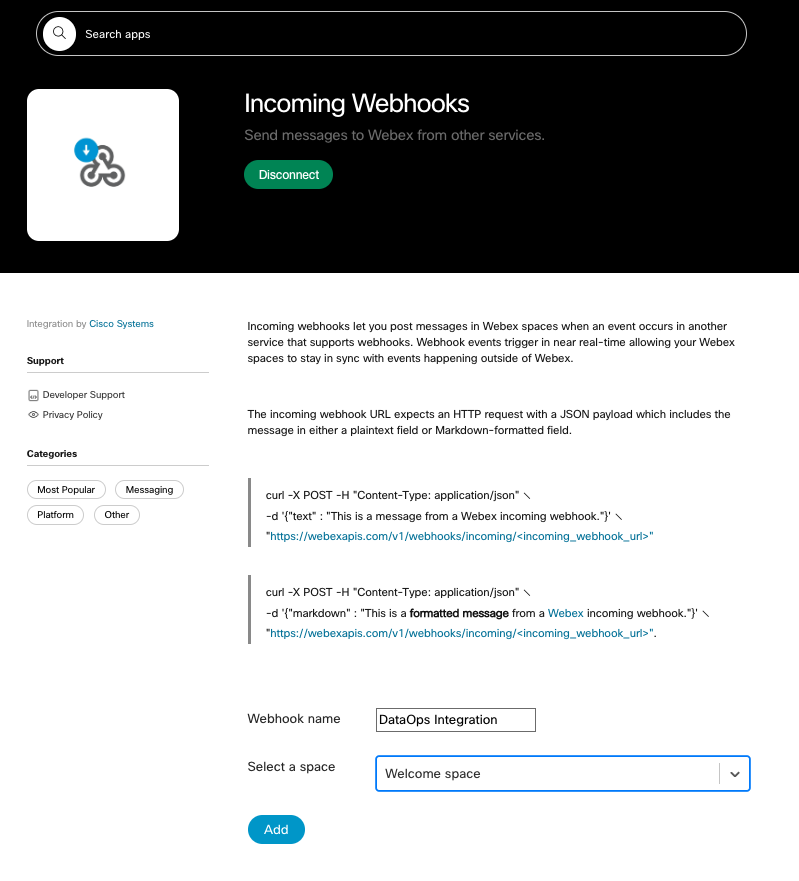
-
Click Add, scroll down, and copy the webhook URL so you can add this into the setup of the integration on DataOps.live.
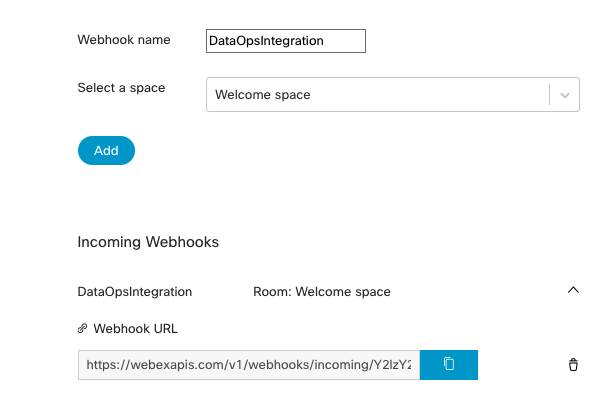
Setup and triggers
After creating the webhook in Webex, you must set up the integration within DataOps.live.
Add the webhook URL into the Integration settings and select the trigger events based on your requirements.
There are multiple trigger events for the teams' integration, including:
- Pushes to the repository
- Issues
- Merge requests
- Pipeline status changing etc.
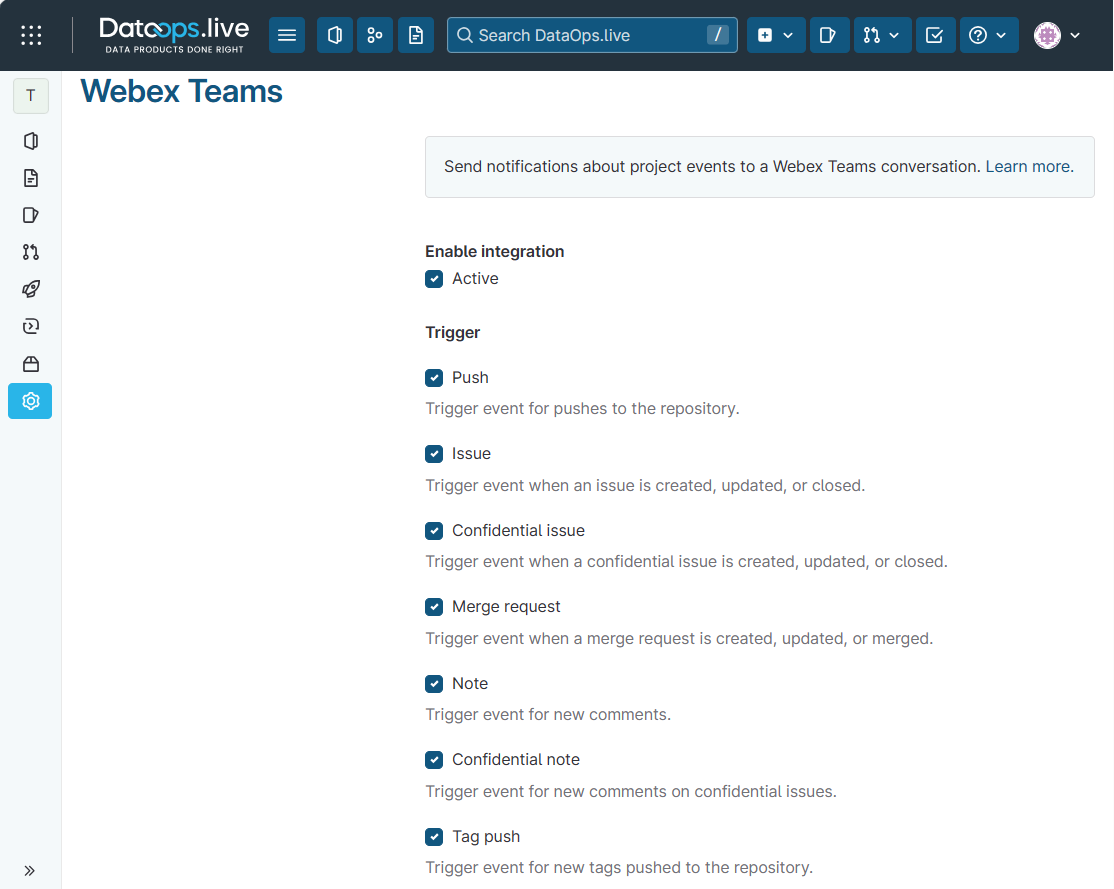
Cisco Webex notification
The integration notifications appear in the Webex space where you set up your webhook and will contain links to individual commits, merge requests, pipelines, etc.
